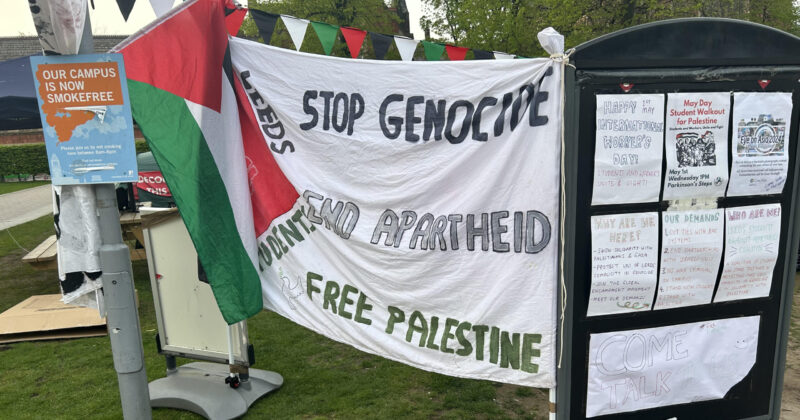NUS conference 2011: the fight for students has just begun
Joana Pinto talks about her experience running for NUS Vice President position, NUS conference, and where students can take the fight from here
This year’s NUS conference came after the year of walkouts and protests, of strikes and occupations, of thousands and thousands of students taking the streets in a wave of radicalism unseen for over a generation.
It was the year that the government tripled fees, ditched EMA and launched an unprecedented attack on jobs and services, designed blow the welfare state back into the 1930s.
But for the most part, NUS conference remained in its cocoon.
While rhetoric and mood have shifted ever so slightly towards the left, the average disposition of delegates and NUS executive was of temperate strategy, lukewarm measures and all in all business as usual.
This year students need a leadership capable of standing firm against the ConDem coalition and defending them from intimidation and victimisation by police, government and academic management teams. But the conference chose once more to elect an executive which is part of the usual apparatus.
Liam Burns, standing as an independent candidate with backing from Labour Students, was elected as President. He has ruled out support for any lecturers’ strike that could affect graduating students, but at the same time he has declared his support for holding another national anti-fees demonstration. Now we need to hold him to this.
Most motions proposed by the left, like the call for another national demonstration, the support of a general strike and the call for Free Education were voted down. But this isn’t to say there were no signs of change at all this year.
For one, these motions were voted down by wafer-thin margins.
But also, we saw a very first proficient united left slate running for full time positions. Vice President Welfare Zone candidate, for example Sean Rillo Raczka, collected over 170 votes.
Former President Aaron Porter’s favoured protégé, Shane Chowen, who voted against another national demonstration in the first semester was kept out of office. There were victories in the form of greater postgraduate support policy, the voting down of proposals which would seriously affect liberation campaigns’ autonomy and the reiteration of anti-fascist, no platform policy.
Where next?
Whilst United Left slate candidates for the NUS leadership fought to win, we also knew that the barriers to creating a fighting NUS were great.
Over the last ten years, NUS has held little interest for the majority of students, focussing almost entirely on discount cards and club nights, restricting campaigning to private lobbies in the back rooms of Whitehall.
The distance between NUS leaders and members was used by previous presidents, like Wes Streeting to further bureaucratise structures, reducing the numbers of conference delegates and restricting the ability of students to put forward motions from the floor.
A trustee board made up of business leaders and financiers was created to decide which NUS policies could be implemented, and which could not.
NUS has become less accountable, and less democratic.
But the United Left slate’s ability to challenge the status quo with some success has provided a platform through which change can come.
Groups like the National Campaign Against Fees and Cuts, Student Broad Left and the Education Activist Network showed that they could work together to build a fighting student movement back in winter. They showed that they could replicate this effort, not just outside NUS, but inside it too.
And that’s where a new exciting possibility lies.
It may not have looked like it at NUS conference, but the student movement was transformed by the mass walkouts and occupations in winter. Fighting sabbatical officers and student union councils have overturned the a-political student unionism at many large universities. A layer of college and school students determined to fight for their futures has been created.
Workers Power is fighting to bring all these groups and individuals together in a mass conference in the new academic year, to form a new, united student organisation that can act as a well-organised fighting faction within the NUS, and an anti-cuts anti-fees movement outside of it that can act without the official structures where necessary.
If we can build this – and we have received an enthusiastic reaction so far – then we are on the road to building a new individual membership, fighting students union that can kill the marketisation of our education system and play a leading role in defending jobs and services for all.







